Wie lange dauert das Laden einer 100-Ah-Batterie mit einem 300-W-Solarpanel?
Ein 300-W-Solarmodul ist aufgrund seines ausgewogenen Verhältnisses zwischen Leistung und Größe eine beliebte Wahl für netzunabhängige Energiesysteme. Wenn Sie eine 100-Ah-Batterie verwenden, eine der gängigsten Kapazitäten für Wohnmobile, Boote und Notstromsysteme, ist es wichtig, die Ladezeit eines 300-W-Solarmoduls zu kennen. In diesem Leitfaden erläutern wir die wissenschaftlichen Grundlagen, reale Variablen und liefern genaue Berechnungen, damit Sie eine fundierte Entscheidung treffen können. Ja, ein 300-W-Solarmodul kann die Aufgabe erledigen, aber wie schnell? Lassen Sie es uns herausfinden.
- So funktioniert ein 300-W-Solarpanel beim Laden einer Batterie
- Ladezeitberechnung für eine 100-Ah-Batterie mit einem 300-W-Solarpanel
- Reale Ladeszenarien mit einem 300-W-Solarpanel
- Vorteile der Verwendung eines 300-W-Solarmoduls zum Laden einer 100-Ah-Batterie
- Beste Batterietypen für die Verwendung mit einem 300-W-Solarpanel
- Ideale Bedingungen für die Verwendung eines 300-W-Solarpanels zum Laden einer 100-Ah-Batterie
- Häufige Fehler, die beim Laden mit einem 300-W-Solarpanel vermieden werden sollten
- Leistungssteigerung eines 300-W-Solarpanelsystems
- Häufig gestellte Fragen zum Laden einer 100-Ah-Batterie mit einem 300-W-Solarpanel
- Abschließende Gedanken zur Verwendung eines 300-W-Solarpanels zum Laden einer 100-Ah-Batterie
So funktioniert ein 300-W-Solarpanel beim Laden einer Batterie
Was ist ein 300-W-Solarpanel?
Ein 300-W-Solarmodul ist ein Photovoltaikmodul (PV), das unter idealen Bedingungen – üblicherweise als Standardtestbedingungen (STC) bezeichnet – 300 Watt elektrische Leistung erzeugen kann. Dazu gehören eine Sonneneinstrahlung von 1000 W/m², eine Zelltemperatur von 25 °C und ein klarer Himmel.
100-Ah-Batterien verstehen
Eine 100-Ah-Batterie (Amperestunden) bei 12 V enthält 1200 Wh (Wattstunden) Energie (12 V × 100 Ah). Diese Zahl ist wichtig, um abzuschätzen, wie lange das Aufladen eines 300-W-Solarmoduls dauert.
Faktoren, die die Ladezeit beeinflussen
Auch wenn die Mathematik einfach erscheint, variiert die Leistung in der Praxis aufgrund mehrerer Faktoren:
1. Effizienz und Leistung von Solarmodulen
Kein Modul liefert dauerhaft volle 300 Watt. Die Effizienz sinkt durch Beschattung, Verschmutzung, Temperaturanstieg und Modulausrichtung.
2. Sonnenstunden
Die maximale Sonneneinstrahlung (PSH) gibt an, wie viele volle Sonnenstunden Sie pro Tag haben. An den meisten Orten beträgt die durchschnittliche Sonneneinstrahlung zwischen 3 und 6 PSH.
3. Batterieeffizienz
Das Laden ist nicht zu 100 % effizient. Lithiumbatterien haben einen Wirkungsgrad von etwa 95 %, während Blei-Säure-Batterien bei etwa 80–85 % liegen.
4. Ladereglertyp
MPPT-Laderegler (Maximum Power Point Tracking) können die Effizienz im Vergleich zu PWM-Reglern (Pulsweitenmodulation) um bis zu 30 % verbessern.
>>Siehe auch Batterieäquivalente für LR44 AG13 SG13 LR1154 SR44 SR44SW 303 357 und A76
Ladezeitberechnung für eine 100-Ah-Batterie mit einem 300-W-Solarpanel
Schritt-für-Schritt-Formel
Um abzuschätzen, wie lange es dauern wird, verwenden Sie diese einfache Formel:
Batteriekapazität (Wh) ÷ Solarpanelleistung (W) = Ladezeit in Stunden
Für eine 12-V-100-Ah-Batterie:
12 V × 100 Ah = 1200 Wh
Mit idealer 300W Leistung:
1200 Wh ÷ 300 W = 4 Stunden (ideal)
Aber unter Berücksichtigung einer Systemeffizienz von 80 % (üblich bei Blei-Säure-Batterien):
1200 Wh ÷ (300 W × 0,8) = 5 Stunden (realistisch)
Solarstrahlungsfaktor
Bei 5 Sonnenstunden pro Tag kann das 300-W-Solarmodul Folgendes erzeugen:
300 W × 5 = 1500 Wh/Tag
Das ist mehr als genug, um eine 1200-Wh-Batterie an einem Tag aufzuladen.
Reale Ladeszenarien mit einem 300-W-Solarpanel
Szenario 1: Perfekte Bedingungen
300 W Dauerleistung
5 Sonnenstunden mit maximalem Sonnenstand
MPPT-Laderegler
Lithiumbatterie (95 % Wirkungsgrad)
Ladezeit: ~4 Stunden
Szenario 2: Bewölkte Tage
150 W durchschnittliche Leistung aufgrund schwacher Sonneneinstrahlung
3 Sonnenstunden mit Spitzenleistung
PWM-Controller
Blei-Säure-Batterie (80 % Wirkungsgrad)
Ladeleistung pro Tag:
150 W × 3 = 450 Wh
Benötigte Energie (mit Ineffizienz): 1200Wh ÷ 0,8 = 1500Wh
Ladezeit: ~3,3 Tage
Szenario 3: Wintersaison
200 W durchschnittliche Leistung
2,5 Sonnenstunden
Gemischte Batteriechemie
Ladeleistung pro Tag:
200 W × 2,5 = 500 Wh
Ladezeit: ~2,4 Tage
Vorteile der Verwendung eines 300-W-Solarmoduls zum Laden einer 100-Ah-Batterie
Ausgeglichene Leistung
Ein 300-W-Solarmodul bietet ein gutes Gleichgewicht zwischen Mobilität und Leistungsfähigkeit. Es ist groß genug, um die meisten Deep-Cycle-Batterien unter moderaten Bedingungen täglich aufzuladen.
Kompatibilität
Die meisten 12-V-Laderegler, Wechselrichter und Batterietypen sind mit einem 300-W-Panel kompatibel.
Erweiterbarkeit
Viele Benutzer beginnen mit einem 300-W-Panel und erweitern es später. Das Setup lässt sich problemlos skalieren, wenn Sie weitere Batterien oder Panels hinzufügen.
Beste Batterietypen für die Verwendung mit einem 300-W-Solarpanel
Lithiumeisenphosphat (LiFePO4)
95 % Wirkungsgrad
Lange Lebensdauer (2000–5000 Zyklen)
Schnellladekompatibel
AGM Blei-Säure
Mäßige Effizienz (80–85 %)
Wartungsfrei
Geeignet für mittlere Budgets
Gel-Batterien
Tiefentladefähig
Langsamere Laderate
Weniger effizient
Ideale Bedingungen für die Verwendung eines 300-W-Solarpanels zum Laden einer 100-Ah-Batterie
Sonneneinstrahlung
Streben Sie mindestens 5 Sonnenstunden pro Tag an. Verwenden Sie Solartracker oder eine geeignete Neigung, um die Sonneneinstrahlung zu maximieren.
Saubere Paneele
Staub und Schmutz können die Leistung um bis zu 25 % reduzieren. Reinigen Sie die Paneele regelmäßig, um eine optimale Effizienz zu erzielen.
Einrichtung des Ladereglers
Bei Verwendung eines 300-W-Solarmoduls werden MPPT-Laderegler dringend empfohlen, da sie die Ladezeit erheblich verkürzen können.
>>Siehe auch Shunts in elektrischen Systemen verstehen
Häufige Fehler, die beim Laden mit einem 300-W-Solarpanel vermieden werden sollten
Überschätzung der Leistung
Viele Benutzer gehen davon aus, dass sie ständig 300 W erhalten. Planen Sie nach den tatsächlichen Spitzensonnenstunden, nicht nach der 24-Stunden-Leistung.
Überspringen eines Ladereglers
Das direkte Laden der Batterie von einem Panel ohne Controller kann die Batterie beschädigen.
Falscher Batterietyp
Die Verwendung inkompatibler oder wenig effizienter Batterien (wie etwa billige geflutete Blei-Säure-Batterien) kann zu einer Verschwendung von Solarenergie führen und die Ladezeit verlängern.
Leistungssteigerung eines 300-W-Solarpanelsystems
Fügen Sie einen Batteriemonitor hinzu
Verfolgen Sie den Ladefortschritt und die Effizienz mit Echtzeitüberwachung von Spannung und Amperestunden.
Verwenden Sie hochwertige Verkabelung
Zu kleine oder zu lange Kabel können zu Spannungsabfällen führen. Verwenden Sie für Ihr System geeignete Kabelquerschnitte.
Parallele Solarmodule
Wenn Sie schnelleres Laden oder mehr Energie benötigen, sollten Sie ein weiteres 300-W-Solarpanel parallel hinzufügen.
Häufig gestellte Fragen zum Laden einer 100-Ah-Batterie mit einem 300-W-Solarpanel
Kann ein 300-W-Solarpanel eine 100-Ah-Batterie an einem Tag aufladen?
Ja, unter guten Bedingungen mit 5 Sonnenstunden und einer Systemeffizienz von 80–95 % kann die Batterie an einem Tag vollständig aufgeladen werden.
Brauche ich einen Wechselrichter?
Nicht zum Laden der Batterie, aber Sie benötigen eines, um Wechselstromgeräte über die Batterie zu betreiben.
Kann ich während der Verwendung des Akkus aufladen?
Ja, aber es verlängert die Ladezeit, da das Panel sowohl Nutz- als auch Ladeleistung bereitstellen muss.
Welche Ladereglergröße benötige ich?
Für ein 300-W-Solarpanel bei 12 V ist ein 30-A-MPPT-Controller ideal.
Abschließende Gedanken zur Verwendung eines 300-W-Solarpanels zum Laden einer 100-Ah-Batterie
Ein 300-W-Solarmodul kann unter optimalen Bedingungen eine 100-Ah-Batterie innerhalb eines Tages effizient aufladen. Faktoren wie Sonnenstunden, Modulausrichtung, Batterietyp und Laderegler spielen eine entscheidende Rolle bei der Bestimmung der tatsächlichen Ladezeit. Egal, ob Sie netzunabhängig leben, mit dem Wohnmobil unterwegs sind oder sich einfach auf Notfälle vorbereiten: Wenn Sie wissen, wie lange das Aufladen Ihrer Stromquelle dauert, können Sie besser planen und Stromausfälle vermeiden.
Zusammenfassend lässt sich sagen, dass ein 300-W-Solarpanelsystem bei guter Optimierung eine 100-Ah-Batterie in nur 4 bis 5 Stunden aufladen kann. In der Praxis kann sich dies jedoch oft auf einen ganzen Tag oder länger erstrecken. Wenn Sie diese Variablen verstehen und berücksichtigen, holen Sie das Beste aus Ihrer Solaranlage heraus und haben immer Strom, wenn Sie ihn brauchen.
Machen Sie das 300-W-Solarpanel zu Ihrem zuverlässigen netzunabhängigen Begleiter und übernehmen Sie noch heute die Kontrolle über Ihre Energieunabhängigkeit.

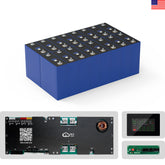

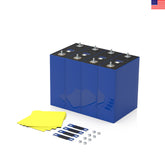

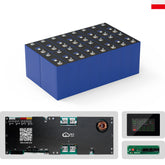

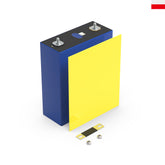

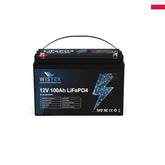
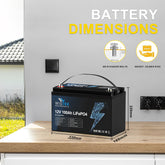
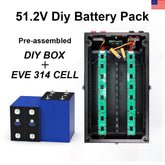

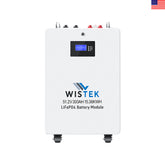
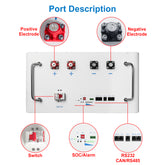
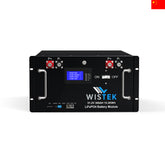
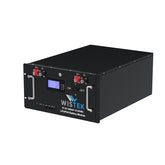


Leave a comment
All blog comments are checked prior to publishing